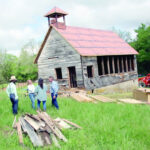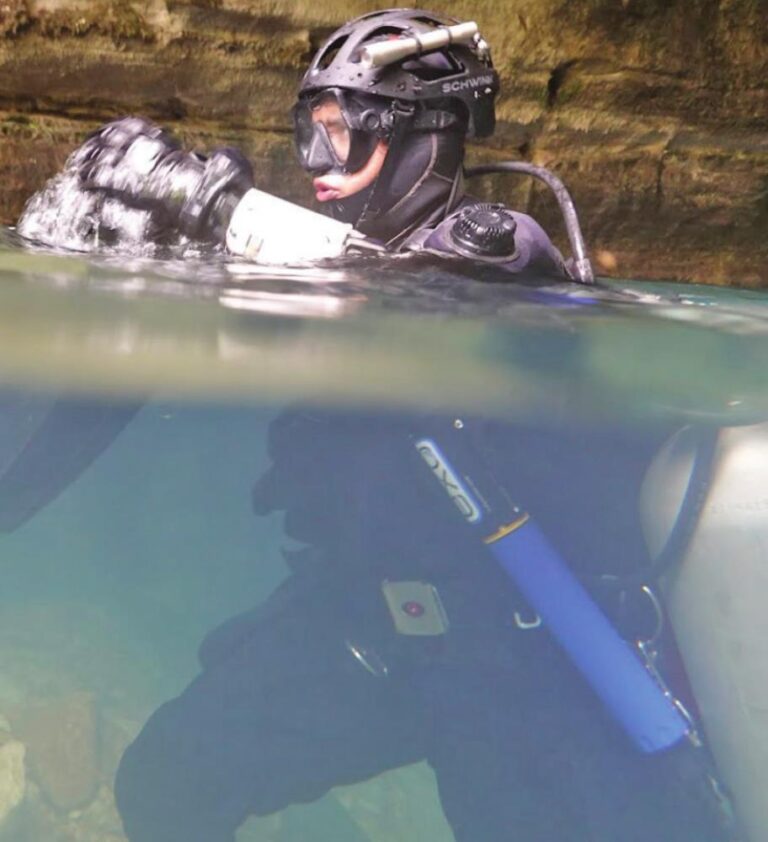An enthusiastic crowd of spectators greeted Dr. Fernando Calderon and the KISS Rebreathers dive team at Roaring River State Park on the morning of July 9 when they surfaced from Roaring River Spring with their catch — a single isopod in a three-inch-tall, plastic tube.
While some hunters search for a trophy buck with antlers worthy of wall-mounting, Calderon and KISS team members Jon Lillestolen and Gayle Orner get excited about finding much smaller prey: the organisms which dwell in underwater caves, specifically in Roaring River Cave. A motivating force behind this month’s hunt in Roaring River Cave was the issuance of a special permit to the KISS team by the Missouri Department of Natural Resources. The permit, good through the end of the year, allows for the collection of a limited number of a variety of organisms which might be found in the cave.
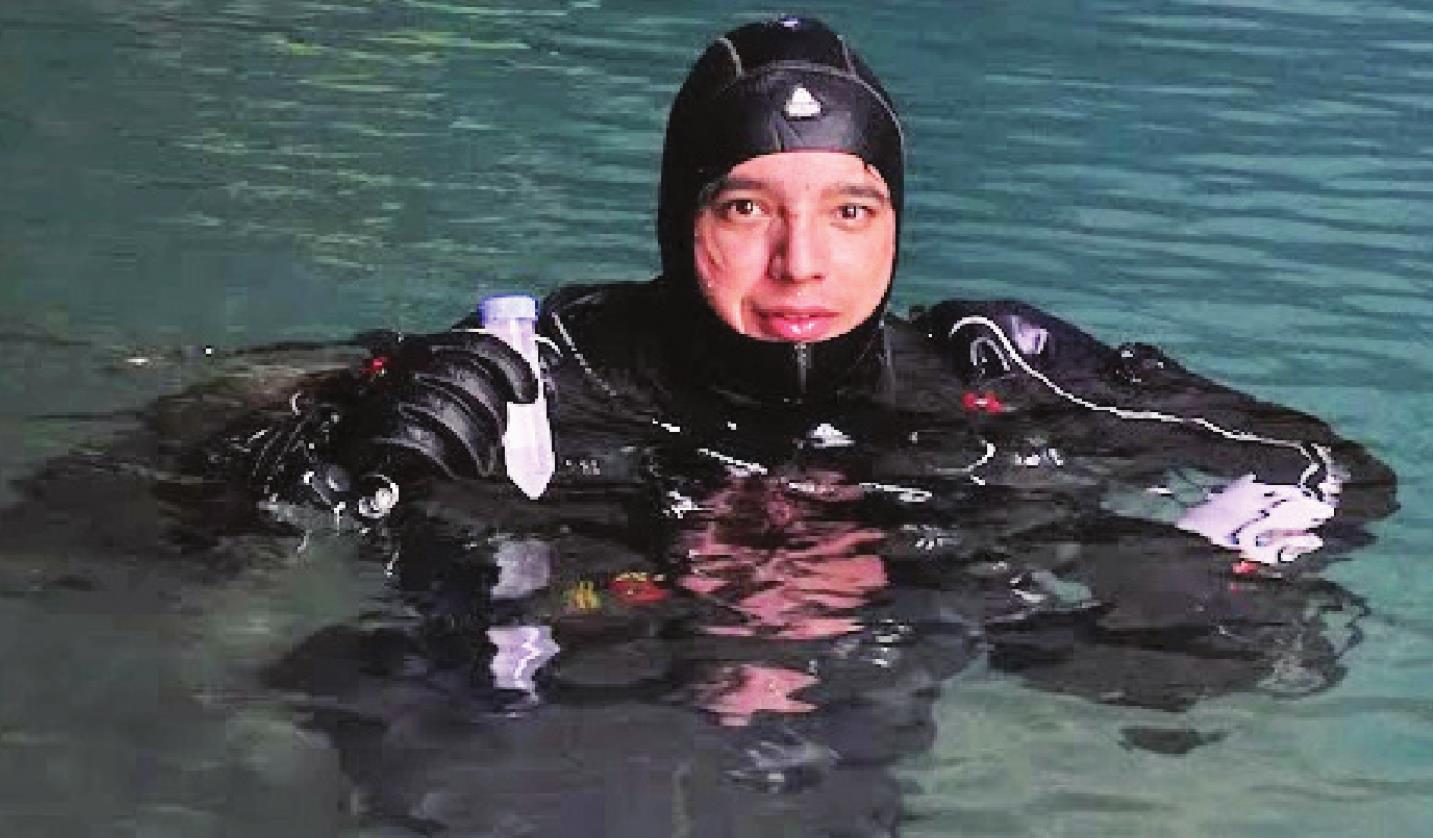
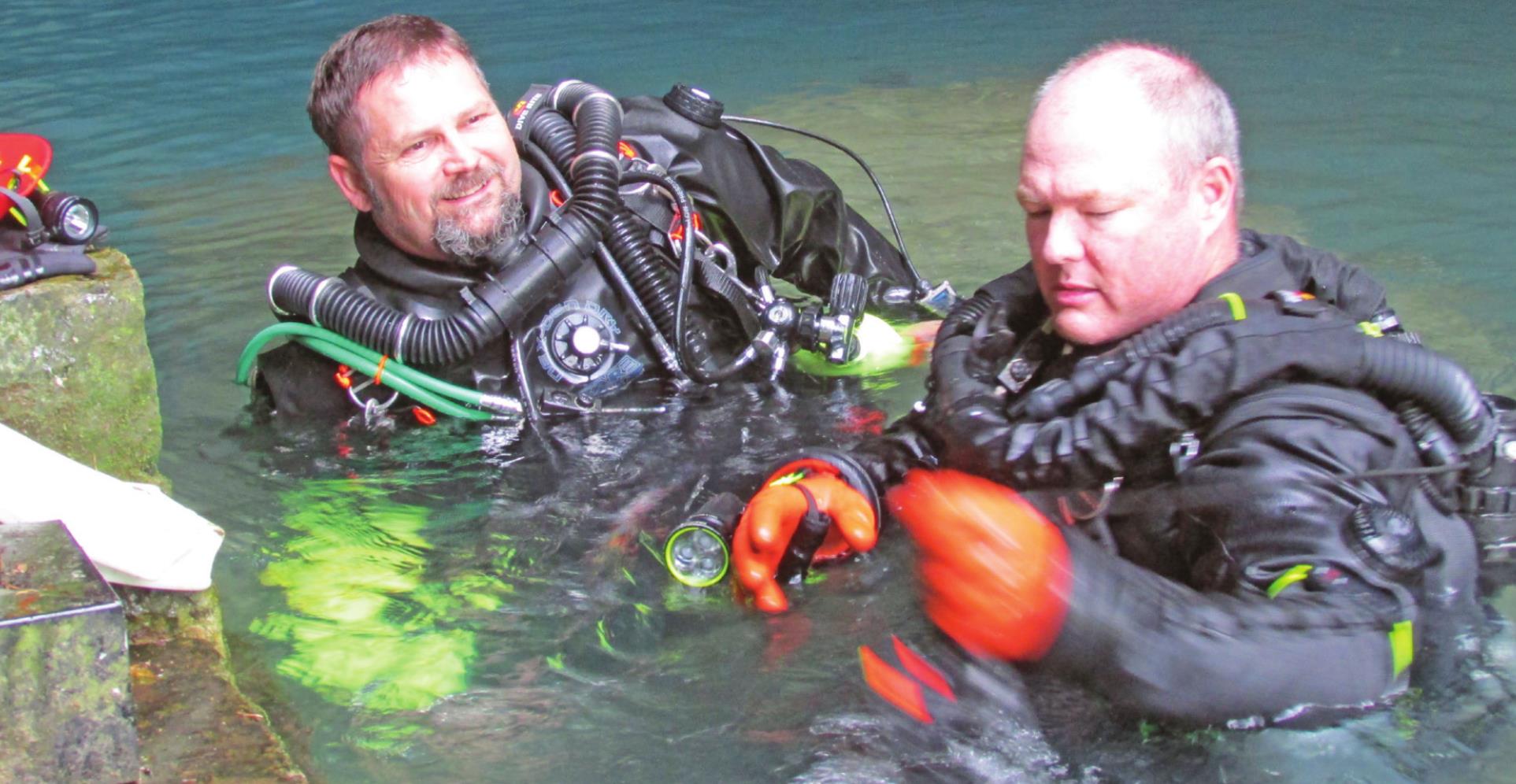
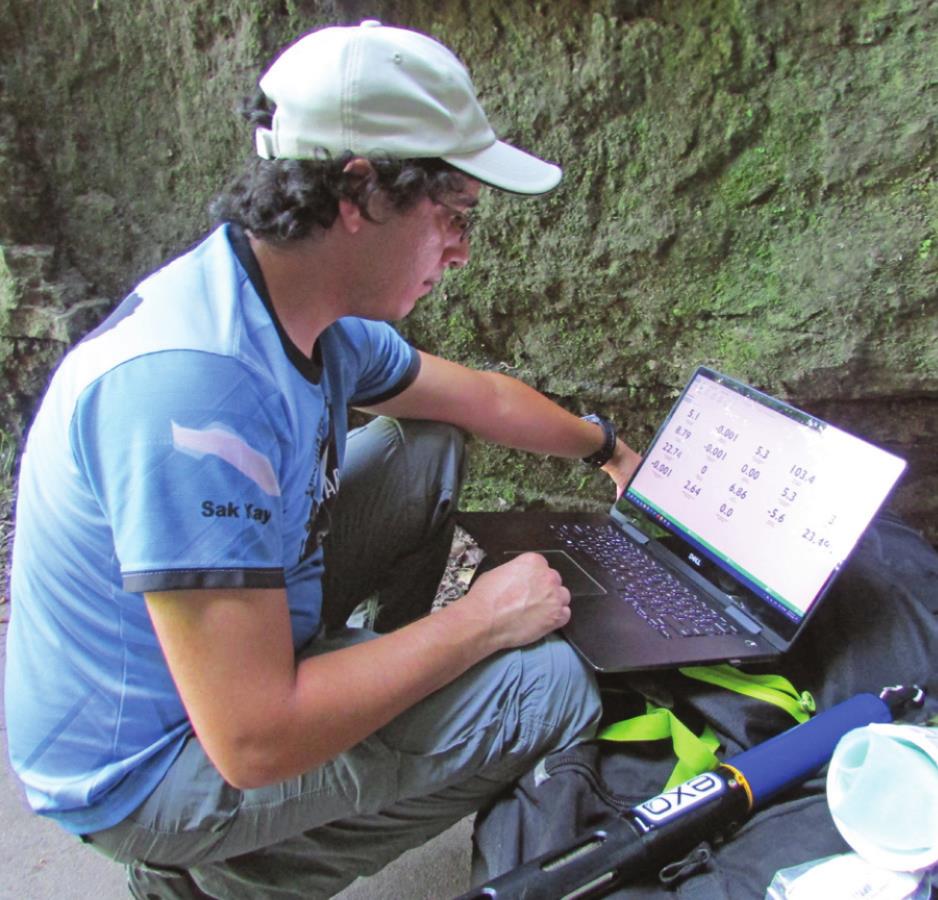
In addition to Saturday’s catch, another species of isopod and an amphipod were collected by divers the previous day. Isopods and amphipods are both segmented crustaceans, but have differences in leg structures.
Research Scientist Dr. Calderon, a recent Texas A&M graduate, a resident of Galveston and an experienced cave-diver, was on hand at Roaring River Spring to help collect and receive the cave specimens for study. Calderon became acquainted with members of the KISS Rebreathers dive team at an international underwater cave conference in Florida in 2018. His youthful appearance and intense interest in the study of aquatic organisms convince one that the study of such creatures began in his seemingly not-so-distant childhood.
“We were able to collect samples from three different species, two types of isopods and an amphipod,” Calderon said.
The collected samples are euthanized with pure ethanol, which is effective at preserving the DNA for genetic research, Calderon said.
Results of the tests should be available by December, he said.
“The identification of the species will tell us if they are unique to Roaring River Cave, or if they are linked to those found in other caves,” Calderon said.
Also important, Calderon said, was the identification of the properties of the water where specimens were located. Some of the creatures were found at a depth of 90 feet subsurface, and others we found at 200 feet.
Calderon was assisted in his search and collection by KISS divers Jon Lillestolen, of Blacksburg, Va., and Gayle Orner, of Madison, Wis. Both have a particular interest in the study of “critters,” as Lillestolen calls them. Orner, who has a background in biology, has spent years as a research toxicologist. Part of her training, she said, involved studying the effects of various chemicals on hatchery-raised trout.
“I was thrilled to be able to collect my first underwater cave critter Saturday,” Orner said. “It’s the first time the creature saw daylight.”
Jon Lillestolen was especially excited about the discovery of the amphipod, since he had not spotted one during his June trip, when he saw “bunches” of a particular type of isopod at a depth of 200 feet.
Divers Greg Ables and Neil Brownlow, of Fort Smith, Ark., also participated in the weekend dive. Newcomer Tom Creason, of Fort Smith, Ark., helped topside as surface manager.
While underwater in Roaring River Cave, Calderon situated two sensors at different depths which will record temperatures every 15 seconds. The sensors will remain in place until the team’s next diving exploration in August.
Calderon also made use of a larger instrument he brought with him: a multiparameter sonde, which collected a vertical profile of the water’s properties, including the salinity, the pressure, the oxygen level, the PH level and the turbidity.
Although the collection of specimens was a priority of the team’s July trip due to Calderon’s presence, a dive to the restriction which exists in the cave at a depth of 225 feet, was also on the agenda.
“The water flow coming through the restriction was way down since our last trip in June,” Lillestolen said.
Statistics from the United States Geological Survey (USGS) showed the flow at 50 cubic feet per second (CFS) on June 9, down from the rate of 100+ CFS during the team’s June visit to Roaring River Spring.
Lillestolen said with the flow at the lower rate he could have easily passed through the restriction to do more exploration of the large room below it, but opted not to, since he didn’t have a team member to accompany him. However, he did push his head and shoulders through to check conditions on the other side.
Due to illness, KISS Rebreathers Head Diver and CEO Mike Young, had to sit the July trip out. Divers Neil Brownlow and Greg Ables, who were present, dive with back-mounted rebreathers, which would not have permitted passage through the restriction.
Orner and Lillestolen dive with a side-mounted Sidewinder rebreathers, which will allow for navigation through the restriction, but Orner has been through it yet.
“I’m preparing myself for it mentally,” Orner said. “I’m not quite confident enough for it yet.”
A seasoned diver with over 30 years of diving experience, Orner’s reservation about going through the restriction may have something to do with Young’s admonition that she’d “have to wiggle a little” to get through it.
Although the remark may sound glib to non-divers, any extra exertion calls for the adjustment of oxygen levels on the divers’ rebreathers, a technical skill made more challenging as depths increase.
“I’m thankful that the divers on our team are all very respectful of each other,” Orner said. “If one of us has the slightest concern about doing something [like going through the restriction], or even diving at all on a certain day, nobody gives anybody grief about it. Safety is a priority.”
During Lillestolen’s dive to the restriction, he indicated that it’s fairly clear of debris and that, barring flooding, the team should be able to easily pass through it on their scheduled Aug. 19-21 trip to Roaring River State Park.
The KISS team anticipates the presence of celebrity Dive Talk hosts Woody Alpern and Gus Gonzalez during the visit. The duo has been broadcasting podcasts featuring divers and diving equipment on their popular Youtube channel since early 2020.
The KISS team’s Aug. 20 dive will also correspond with Kids’ Fishing Day at the park.



